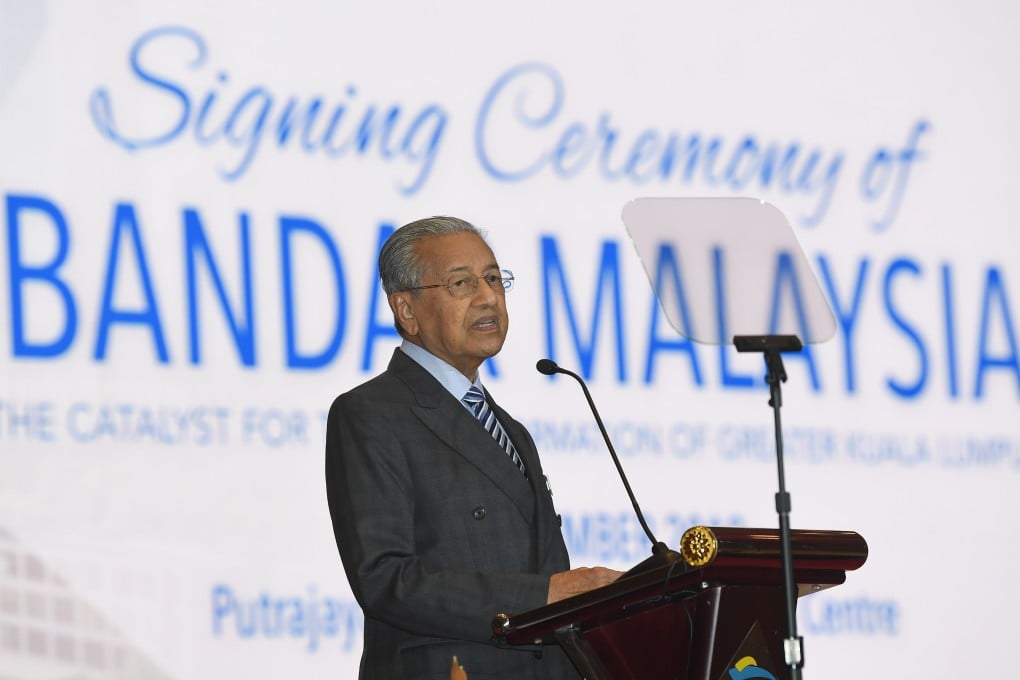Advertisement
Malaysia revives 1MDB-linked mega project as it strengthens economic ties with China
- Prime Minister Mahathir Mohamad said the Bandar Malaysia project will underline bilateral and trade relations with China
- The Singapore-Kuala Lumpur high speed rail link is back on track, but with adjustments to reduce costs
Reading Time:3 minutes
Why you can trust SCMP

The controversial Bandar Malaysia mega-project linked to the 1Malaysia Development Berhad (1MDB) global financial scandal received a new lease on life on Tuesday after the government signed a deal with a China-backed consortium to continue the venture.
Malaysian Finance Ministry subsidiary TRX City said it had entered into a deal with IWH-CREC, a consortium between the Beijing-owned China Railway Engineering Corporation (CREC) and local developer Iskandar Waterfront Holdings to develop the 48-acre plot of land.
Bandar Malaysia was originally envisioned as a central transport hub for a dozen highways and several rail lines including the stalled Singapore-Kuala Lumpur high speed rail link. It was announced in 2011 by the former premier Najib Razak, who is currently on trial for multiple counts of corruption and abuse of power linked to the 1MDB financial scandal that saw billions siphoned out of the state sovereign wealth fund.
Advertisement

Prime Minister Mahathir Mohamad said at the signing ceremony that the revival of the project was “testimony to both Malaysia and China working out a collaboration that will benefit our peoples”.
Advertisement
Unlike ongoing Malaysia-based Belt and Road Initiative projects such as the East Coast Rail Link, Bandar Malaysia was pursued in “a larger context of forging and underlining long-term bilateral and trade relations between Malaysia and China”, he said.
Advertisement
Select Voice
Choose your listening speed
Get through articles 2x faster
1.25x
250 WPM
Slow
Average
Fast
1.25x